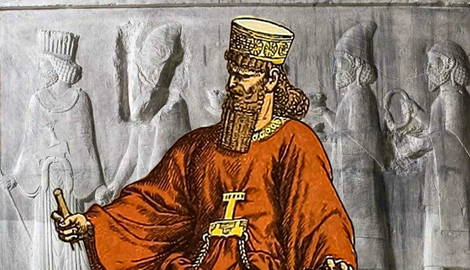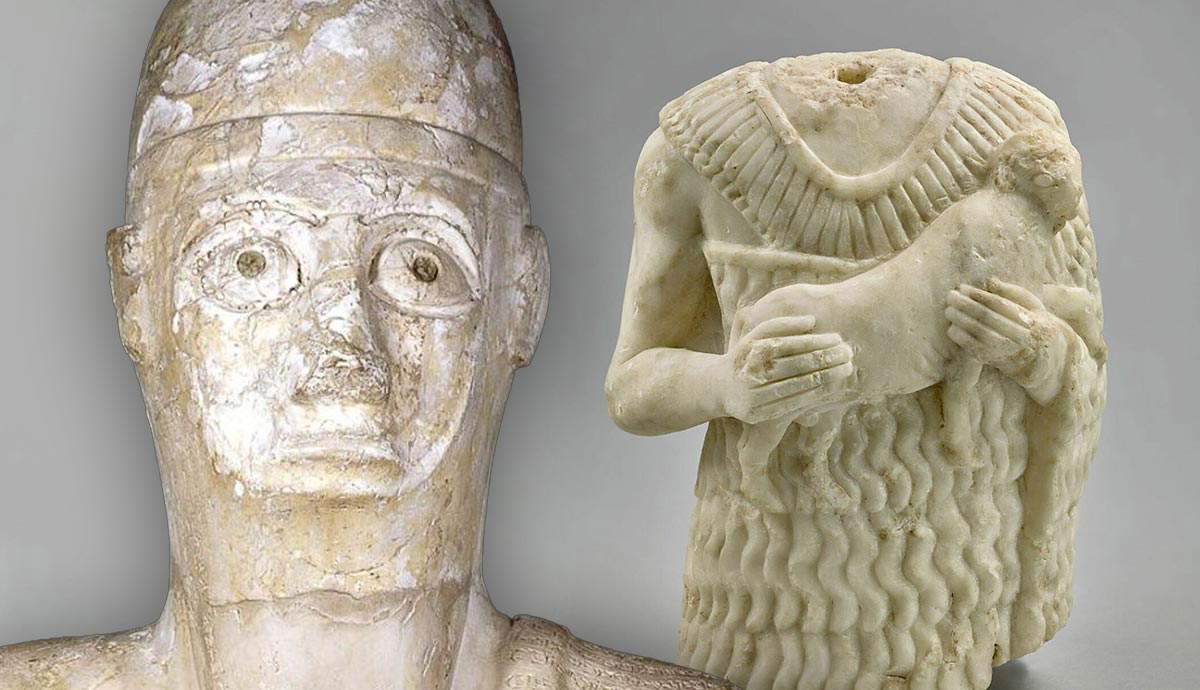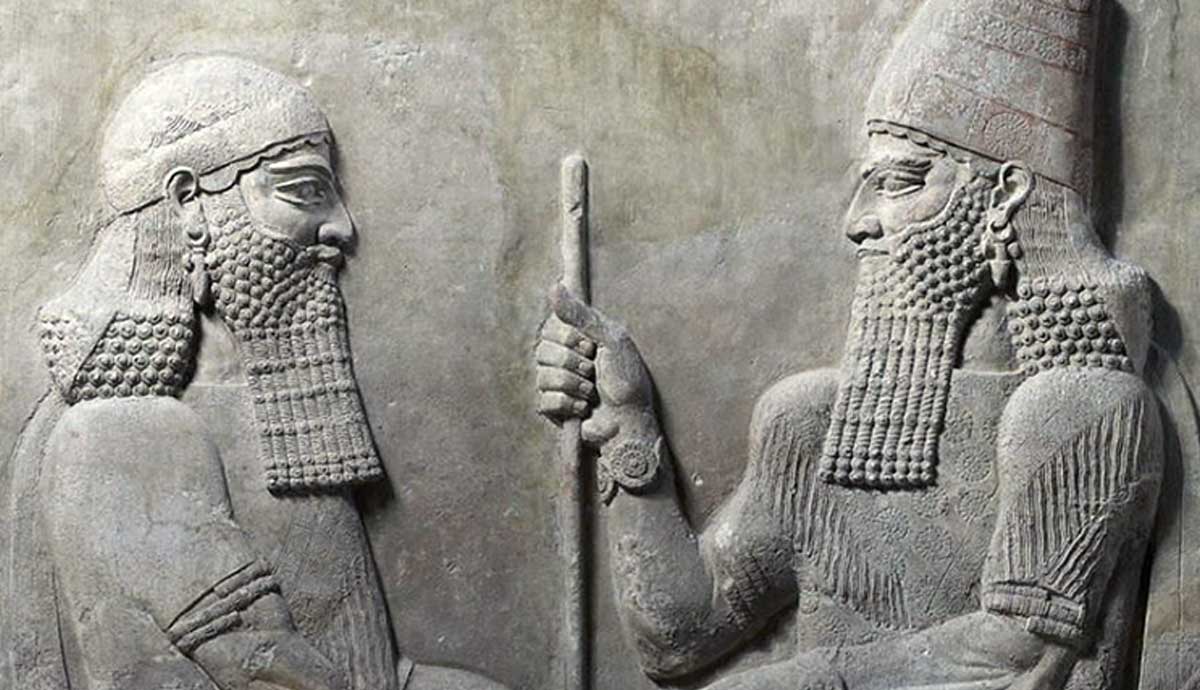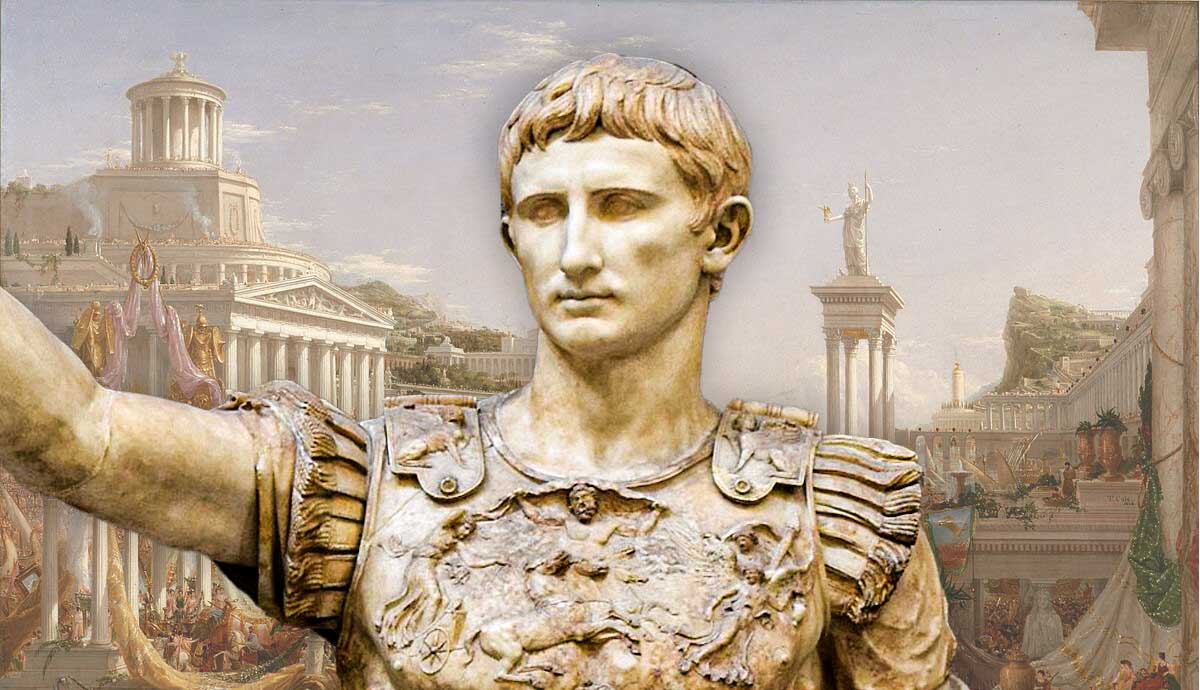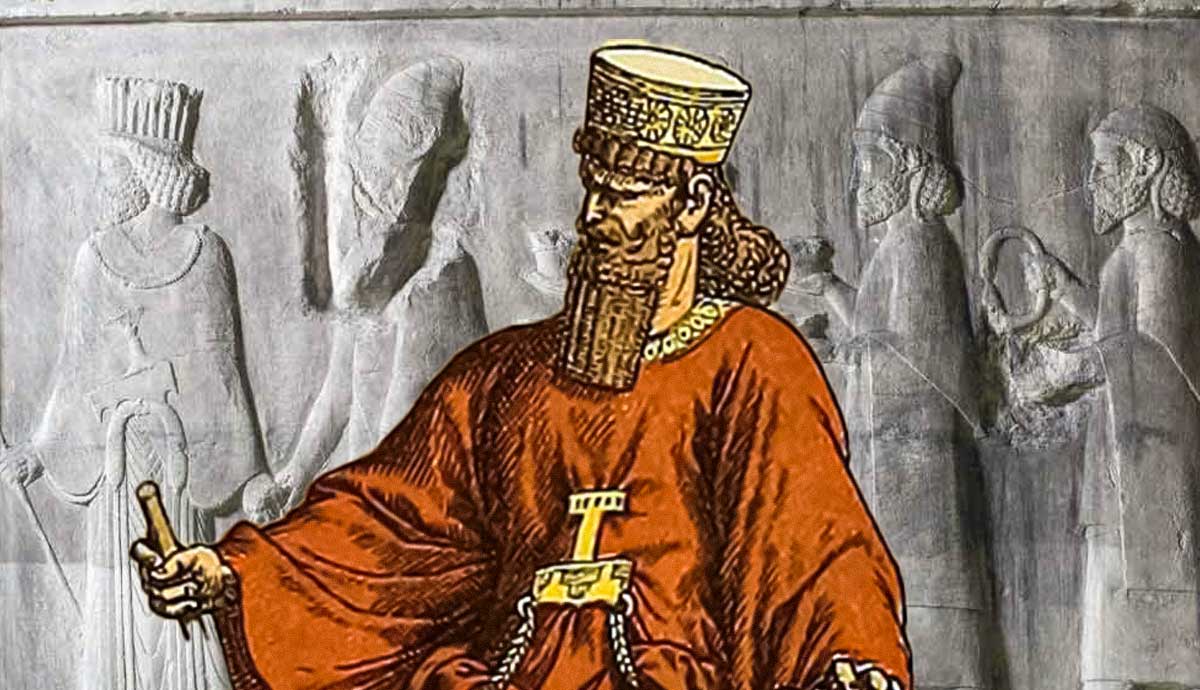
The ancient Medes are one of the least understood and most often overlooked people of the ancient Near East. In the 7th century BCE, the Medes helped conquer the Assyrian Empire on their way to establishing a powerful kingdom in ancient Iran and played a major role in the region’s transition from the Iron Age to the Achaemenid Persian Empire.
What Are the Origins of the Medes?

The origins of the Medes are murky due to a lack of archaeological evidence and all of the relevant written texts coming from later writers. What is known is that the Medes likely formed as a group in the Zagros Mountains and then made Northwestern Iran their homeland. Modern scholars have classified their language as Indo-European, primarily through known Persian loanwords. This is because there are no extant inscriptions in the Median language, leading some historians to argue that the Median language and the later Persian language were indistinguishable.
The Chronology of the Medes

The lack of Median inscriptions and Median material culture has limited modern historians to rely on classical histories to reconstruct their chronology. The 5th-century BCE Greek historian Herodotus provides the most detailed account of Median history, but others add to the historiography of the Medes. With that said, the details and precise chronology of Herodotus’ and other classical historians’ accounts are lacking and subject to debate. According to Herodotus, Deioces, who ruled from the late 8th century to the early 7th century BCE, was the first Median king. Deioces built the capital city of Ecbatana and was described as just and fair.
“Once his sovereign power was firmly established, he continued his strict administration of justice. All suits were conveyed to him in the form of written documents, which he would send back after recording upon them his decision.” (Herodotus, 1.96)
The just and stable rule of Deioces was followed up by that of his son, Pharaotes (ruled c. 678-624 BCE). Herodotus credited Pharaotes for defeating the Persians and conquering most of ancient Iran in the process, but, as noted by Briant, the details of the subjugation are unknown. Perhaps the most interesting element of Herodotus’s account of Pharaotes’s rule is how the king died fighting the Assyrians.

“He proceeded to the systematic conquest of Asia, and finally attacked the Assyrians – the Assyrians of Nineveh, that is, who were formerly masters of all Asia, but at that time stood alone because of the desertion of their allies. However, they were still powerful and prosperous, and in the campaign against them Pharaortes and most of his army were killed.” (Herodotus 1.102)
Pharaortes was then succeeded by his son, Cyaxares (ruled c. 624-585 BCE), who immediately marched against Assyria to avenge his father. Cyaxares then helped set into motion a course of events that drastically changed the political and cultural trajectory of the Near East.
Affecting the History of the Near East

The conflict between the Assyrians and Medes began long before Deioces established the Median Kingdom. The earliest mention of the Medes in the Assyrian annals was from the reign of Shalmaneser III (ruled 858-824 BCE). The annals describe how the king “descended” into the land of the Medes. This would partially explain the hostility between the Medes and Assyrians, although much of that was probably a power struggle more than anything. As the Medes became a kingdom and a force in the geopolitics of the Near East, they made other friends and enemies along the way.
The most important alliance they made was with the Neo-Babylonian Dynasty, which happened through a marriage alliance. However, as the Medes rose in power, they were also challenged by the Scythians. Herodotus wrote that while Cyaxares was battling the Assyrians, the Scythians swept down from the north and subjugated the Medes. Scythian dominance lasted for forty years until Cyaxares invited the Scythian leaders to a banquet, with the following results.
“At last Cyaxares and the Medes invited the greater number of them to a banquet, at which they made them drunk and murdered them, and in this way recovered their former power and dominion.” (Herodotus, 1.106)

Cyaxares and the Medes were then able to focus their attention west, beyond the Zagros Mountains. The alliance with the Neo-Babylonians was established through marriage before 612 BCE, but the Assyrian annals relate that the alliance was reaffirmed.
“[Their king] descended the Tigris, encamped against Assur, made an assault upon the city and captured it. [The city] he destroyed. He inflicted a bad defeat upon the people and nobles. He took its people captive, [and carried off its spoil. The king] of Akkad and his army, which had marched to the aid of the Meds, did not arrive (in time for) the assault. The city … [The king of Akkad] and Umakishtar (Cyaxares) became acquainted before the city. Good-(will) and alliance were established between them. [Umakisthar] and his army returned to his land.”
The Neo-Babylonian Dynasty inherited most of the landmass of the Assyrian Empire, while the Medes were left with most of Iran. Cyaxeres was succeeded by his son, Astayges, who ruled from 585 to 550 BCE. Astayges married a Lydian princess named Aryenis, an act that aligned the Median Kingdom with the powerful and wealthy Anatolian kingdom of Lydia. It was during Astayges’s rule that the Medes were at the apex of their power and influence.
Median Culture

The archaeological record of Median material culture is lacking, so scholars are once again relegated to using classical historians. One of the more interesting elements of Median culture was their religion. Some modern scholars believe that they may have practiced a proto-Zoroastrian religion that was inherited by the Persians, although that is not known for sure.
Herodotus noted how the “magi” played an important role in Median culture, especially in how the royal line was determined. Herodotus wrote that Astyages had a dream that was interpreted by the magi to mean that the king’s daughter should be married to a Persian. Astyages’ daughter, Mandane, then married the leader of the Persians, Cambyses, and their first son was Cyrus the Great. Astyages then had another dream where a vine grew from his daughter’s vagina and covered Asia. The magi “interpreted the dream as that his daughter’s son would usurp the throne.” Cyrus did, in fact, usurp the throne in 549 BCE, becoming the king of Persia and Media. The slightly damaged Akkadian cuneiform text, the Nabonidus Chronicle, relates how Astyages lost his empire.
“(Astyages” mustered (his army) and marched against Cyrus (II), king of Anshan, for conquest [. . .] The army rebelled against Astyages and he was taken prisoner. Th[ey hand him over] to Cyrus (II). [. . .] Cyrus (II) (marched) to Ecbatana, the royal city. The silver, gold, goods, property, [. . .] which he carried off as booty (from) Ecbatana he took to Anshan.”

The magi clearly played an important role in the historiography of the Median Kingdom and the Persian Empire. However, it is difficult to determine how important they were in Median daily religion. The first-century BCE-CE Greek historian Strabo wrote that the “sacred rites of the Persians” were also respected by the Medes. Strabo also added that Persian royal clothing styles were inherited from the Medes.
“But after the overthrow of the Medes the Persians acquired in addition certain parts of the country that reached to Media. However, the customs even of the conquered looked to the conquerors so august and appropriate to royal pomp that they submitted to wear feminine robes instead of going naked or lightly clad, and to cover their bodies all over with clothes.” (Strabo 11.13.9)

The only Mede location that has been extensively excavated is the capital city of Ecbatana, but identifying Median culture in the ruins is problematic. After the Medes were long gone, later Persian dynasties continued to use the city. There are material remains of the Achaemenids, Parthians, Sasanians, and Seleucids strewn throughout the city. Identifying differences, especially between the Achaemenids and Medes, is difficult. It is also important to note that currently, no Median artifact has been positively identified, and there is no known Median art style.
The Government of the Medes

A state’s form of government is closely related to culture. Herodotus described how the Medes quickly evolved from several different tribes to a monarchy. Between the tribal system and the monarchy, the Medes had a republic-style government headed by a judge.
According to Herodotus, Deioces was the first and only judge, but he grew tired of the work and stepped down. The people soon decided that they needed a strong monarchy to keep order, so Deiocies was made the absolute ruler. It should be pointed out that Strabo criticized Herodotus for not always giving “an accurate and truthful account of these peoples.” Still, based on some general observations, a few more things can be deduced about the Median government and culture.
Although it is difficult to say for sure, the Median government was likely a large enterprise. At its height, it controlled an area roughly equal to the present-day state of Iran. Within that land were numerous different tribes and ethnic groups that routinely paid tribute to Ecbatana. The tribute was enough to support a large army, which could only have been raised and supported by a large and efficient central government.
The Legacy of the Medes

In addition to being the subject of many classical historiographical accounts, the Medes left an immediate impact on the Near East. Briant, Kuhrt, and other notable scholars of the ancient Near East believe that the Achaemenid Persians used the Median system as their template. The close proximity between the two peoples, as well as the shared language and possibly religion, certainly played a role.
Once the Persians expanded their empire to include most of the Near East, the Medes were often listed as just another province in many Achaemenid inscriptions. The inscriptions on the rock cliff of Behistun in Persia made during the reign of Darius I “the Great” (ruled 522-486 BCE) are important. The inscriptions were written in the cuneiform script of the following languages: Old Persian, Elamite, and Akkadian. As important as the inscriptions were for modern philologists, they also reveal some information about the relationship between the Medes and the Persians. The Medes are listed among the 23 subject peoples.
“Saith Darius the King: These are the countries which came unto me; by the favor of Ahuramazda I was king of them: Persia, Elam, Babylonia, Assyria, Arabia, Egypt, (those) who are beside the sea, Sardis, Ionia, Media . . .”
In a later section of the texts, Darius describes how he came to power by putting down a rebellion. In that section, Persia and Media are mentioned together, suggesting that the Persians thought of the Medes in a similar way.
“After that, all the people became rebellious from Cambyses, (and) went over to him, both Persia and Media and the other provinces.”

Once Darius reestablished Achaemenid rule in the Near East, the Medes were quickly forgotten. However, modern people should not overlook their legacy. The Medes were instrumental in toppling the Assyrian Empire, which marked the end of the Iron Age in the Near East. That deed alone influenced classical historiography, but even more important was how the Medes influenced the Achaemenid Persians, who created the largest empire in the world at the time.
